1. Burger Chef

If you grew up in the seventies, you probably remember Burger Chef as the cheerful, orange-roofed place that promised a fun meal every time. It was once America’s second-largest burger chain, serving up flame-broiled burgers, milkshakes, and the first-ever kids’ meal before the idea caught on elsewhere. Walking in felt like a treat, a mix of excitement and comfort. The smell of fries and the sound of chatter filled the air. But over time, it couldn’t keep up with competition and changing tastes, and the cheerful Burger Chef slowly disappeared, leaving behind a warm slice of fast-food nostalgia.
2. Arthur Treacher’s Fish and Chips

Arthur Treacher’s Fish and Chips felt like a quick trip to Britain with every bite of crisp fried cod and golden chips. The stores had a charm that made you forget you were in a strip mall. People came for the thick fries, the malt vinegar, and that perfect crunch of the fish. It had over 800 locations at its peak before it began shrinking. Changing costs, fried-food fatigue, and stiff competition made it hard to survive. Today only a handful remain, but for many, the taste of Arthur Treacher’s still brings back memories of family dinners and laughter.
3. Chi-Chi’s
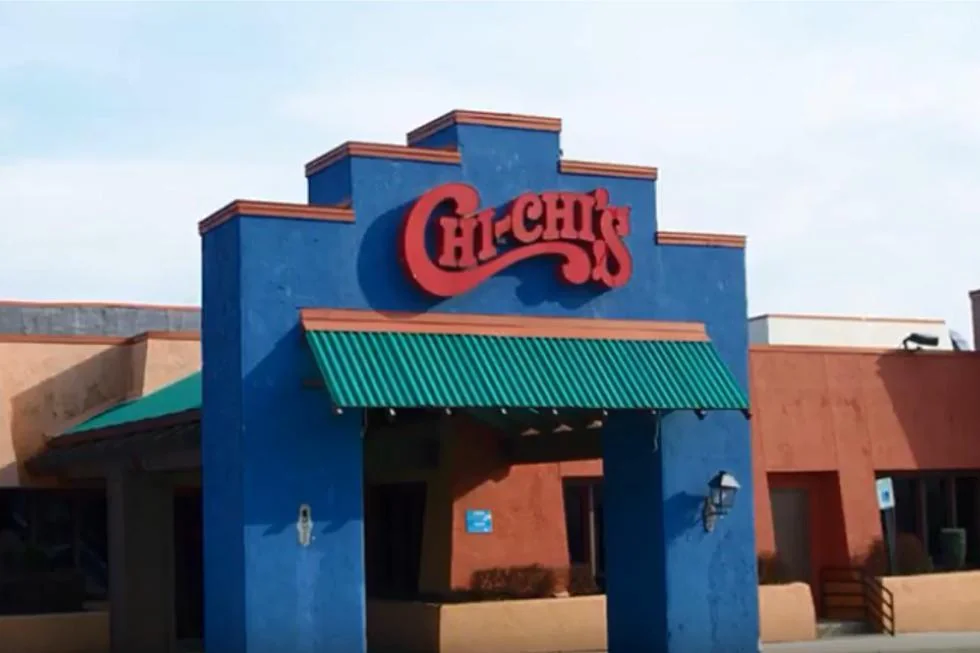
Chi-Chi’s was where many families first discovered the joy of Tex-Mex food, complete with sizzling fajitas, fried ice cream, and bright margaritas. The atmosphere was loud, colorful, and fun, the kind of place where birthdays always felt like a fiesta. It became a go-to for celebrations through the eighties and nineties. But as new Mexican-inspired chains rose and financial troubles grew, Chi-Chi’s started to fade. A few unfortunate events sealed its fate, and the once-lively brand vanished from the scene. Still, many people remember its energy fondly and wish they could relive those carefree nights.
4. Steak and Ale
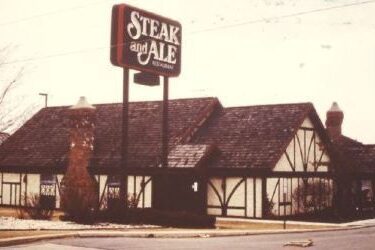
Steak and Ale felt like the grown-up restaurant for middle-class families who wanted a night out without the high prices. The dim lights, wood panels, and salad bar gave it a warm, relaxed atmosphere. People came for a juicy steak and that famous honey-butter bread, a meal that felt hearty yet affordable. It was the perfect mix of comfort and quality in its prime. But over time, rising costs and competition from newer steakhouses chipped away at its success. It’s one of those places that reminds us when dining out felt like a simple, earned reward.
5. Howard Johnson’s Restaurants

Seeing the orange roofs of Howard Johnson’s along the highway once meant good food and a cozy stop on family road trips. Their fried clams, hot dogs, and signature ice cream became road-trip staples for decades. Each restaurant felt familiar, no matter where you were in America. It was a brand that represented comfort, consistency, and an era of slower travel. As fast-food chains took over and motels modernized, the need for roadside diners like Howard Johnson’s faded away. The orange roofs disappeared, but the memory of those family pit stops still lingers sweetly.
6. Red Barn
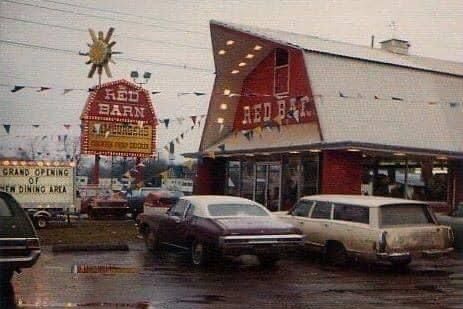
Red Barn looked exactly like its name promised, complete with barn-shaped buildings that made every visit feel playful and homey. It served burgers, chicken, and even one of the first salad bars in fast food. Families loved it because it felt both fun and familiar, a place where the kids could enjoy themselves while parents relaxed. But as big burger brands expanded and franchise troubles grew, Red Barn’s charm couldn’t keep up. The barns eventually closed or turned into other businesses. Still, the sight of that red roof brings back smiles for anyone who remembers it.
7. Kenny Rogers Roasters
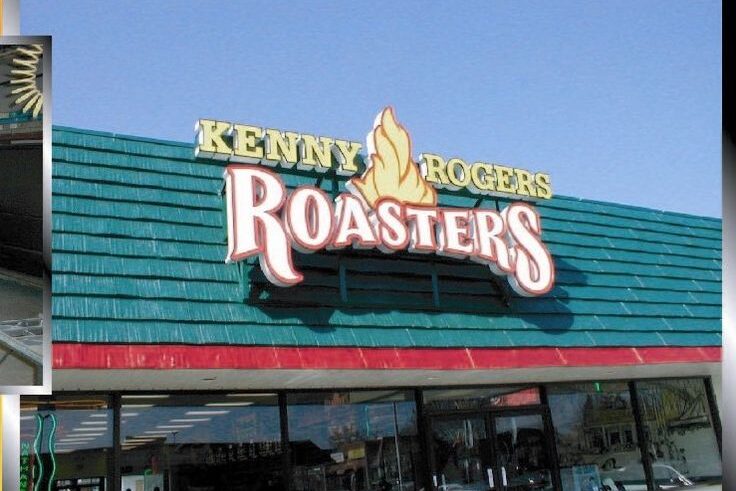
When Kenny Rogers Roasters opened, it felt like comfort food met country music fame. The rotisserie chicken was tender, the sides hearty, and the vibe felt warm, like a family kitchen. At its height, locations popped up everywhere, and even a Seinfeld episode made it part of pop culture. But as dining trends shifted toward faster, cheaper food, the brand’s slow-cooked style struggled to compete. Many stores closed, but its memory still lives on in the minds of those who remember that perfect chicken and cornbread. It was cozy, wholesome dining at its best.
8. Ground Round

If you ever sat at a table covered in peanut shells at Ground Round, you’ll remember the easygoing, family-friendly energy that filled the place. Free popcorn, peanuts, and casual vibes made it perfect for kids and parents alike. It was the kind of restaurant where no one hurried you, where birthdays and weeknights felt equally special. As newer chains entered the market, Ground Round lost its footing and slowly disappeared from many towns. Still, it’s remembered as the place that made dining out simple, joyful, and just a little bit messy in the best way.
9. Sambo’s
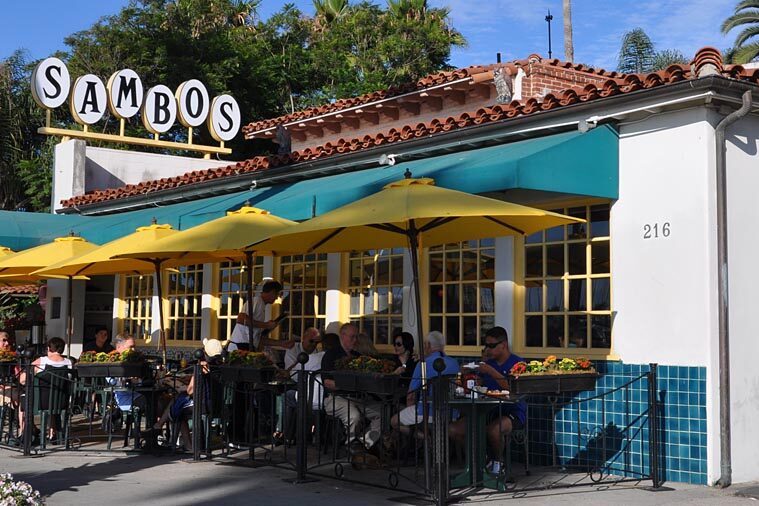
Sambo’s was once a bustling breakfast destination known for its pancakes, coffee, and family crowds. In its early years, it expanded fast and seemed unstoppable. But as times changed, the brand’s name sparked controversy and overshadowed its food and service. Despite attempts to rebrand, the chain couldn’t recover its reputation or rhythm. Eventually, nearly all locations closed, leaving behind one surviving restaurant that serves mostly nostalgia. For many, it remains a complicated memory of a simpler breakfast era clouded by lessons about culture, branding, and change.
10. Lum’s

Lum’s was a Miami-born spot that made hot dogs steamed in beer a signature meal. It was quirky, flavorful, and surprisingly fancy for fast food. The menu was full of personality, and walking in felt different from the usual burger stop. At its height, there were hundreds of locations across the country. But as tastes shifted and novelty faded, Lum’s couldn’t hold on to its once-loyal following. It eventually disappeared, remembered mostly by those who crave that strange, satisfying flavor combination that felt uniquely its own.
11. Blimpie
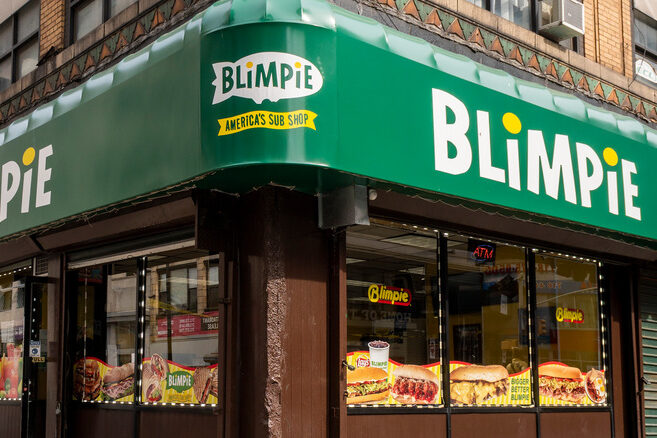
Before Subway took over the sandwich world, Blimpie was the go-to spot for a quick sub made your way. It had a friendly neighborhood feel, serving freshly sliced meats and soft rolls long before custom sandwiches were everywhere. At its peak, Blimpie had thousands of shops, each one promising a hearty bite and friendly service. But competition grew fierce, and Blimpie’s presence faded over time. A few still stand, like echoes of an earlier era when grabbing a sub felt a little more personal and the name Blimpie meant lunch done right.
12. Minnie Pearl’s Fried Chicken
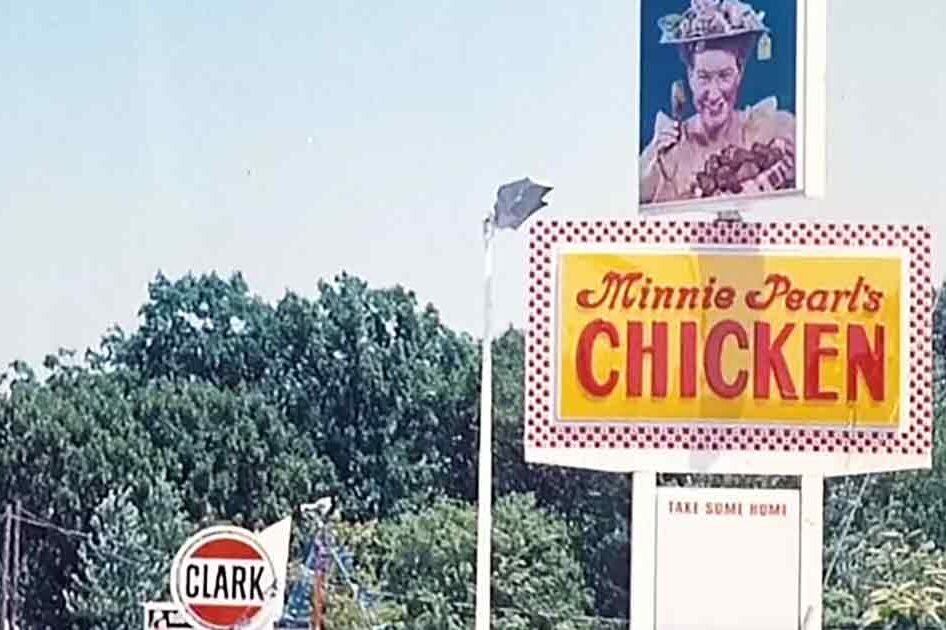
With its southern charm and country flair, Minnie Pearl’s Fried Chicken expanded fast, promising crispy fried chicken that tasted like home. For a short time, it looked ready to rival the biggest chains. But its rapid expansion became its downfall, and mismanagement led to a quick collapse. The stores closed almost as quickly as they opened, leaving behind the memory of a brand that flew too close to the sun. Still, many who tasted it remember the golden crust and warm hospitality that made Minnie Pearl’s so beloved, if only for a while.
13. Gino’s Hamburgers
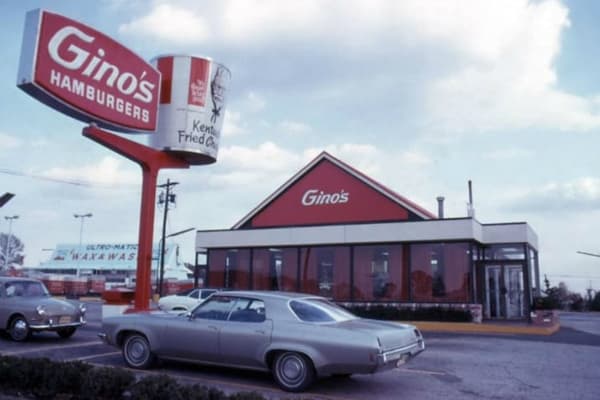
Gino’s Hamburgers was the East Coast’s pride, started by NFL players who knew how to build excitement and teamwork. Its burgers and fries were simple, satisfying, and full of local loyalty. Fans loved that it felt like more than just another burger joint; it was a community hangout with heart. At its peak, it merged with Roy Rogers, and slowly, the Gino’s name faded away. Years later, a few locations resurfaced briefly, but the original magic never quite returned. Gino’s remains one of those names that make people say, “I remember that place.”
14. White Tower

White Tower looked almost identical to White Castle, right down to its gleaming white building and small square burgers. It became known for good food served fast and friendly, winning loyal customers across several states. But legal battles over its resemblance to White Castle and fierce competition eventually hurt the brand. By the time other fast-food giants grew stronger, White Tower’s influence had faded. Today it’s a piece of hamburger history, remembered fondly by those who once lined up for its sliders and milkshakes during the early days of America’s burger boom.
15. Wag’s
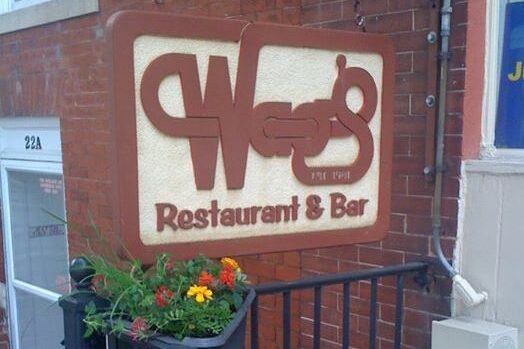
Owned by Walgreens, Wag’s was the pharmacy giant’s attempt at creating a chain of diners that served hearty meals in a comfortable setting. The food was classic American fare, burgers, breakfast plates, and pies that felt homemade. Families loved that it was clean, quick, and cheerful. But even with Walgreens’ support, the chain couldn’t compete with bigger diner brands and changing consumer habits. Most locations closed by the early nineties, leaving behind nostalgic memories of weekend breakfasts and friendly counter service. For many, Wag’s still represents a time when even pharmacies dreamed of comfort food.
16. The Hot Shoppes
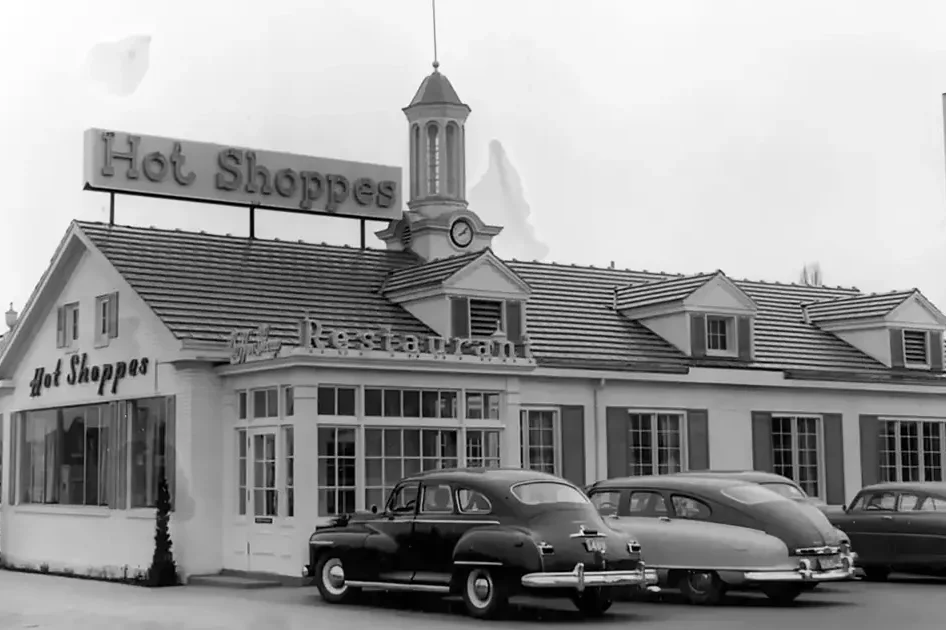
Before Marriott became a global hotel brand, it was known for The Hot Shoppes, family restaurants serving comforting classics like fried chicken, chili, and milkshakes. Families loved the homestyle cooking and friendly service that felt both local and reliable. These restaurants were community favorites, places to gather after church or celebrate small milestones. Over time, as Marriott focused on hotels, The Hot Shoppes faded into history. Still, the brand’s warm spirit carried forward, reminding people that even global companies start small, with a good meal and a family dream.
17. Ponderosa and Bonanza Steakhouses
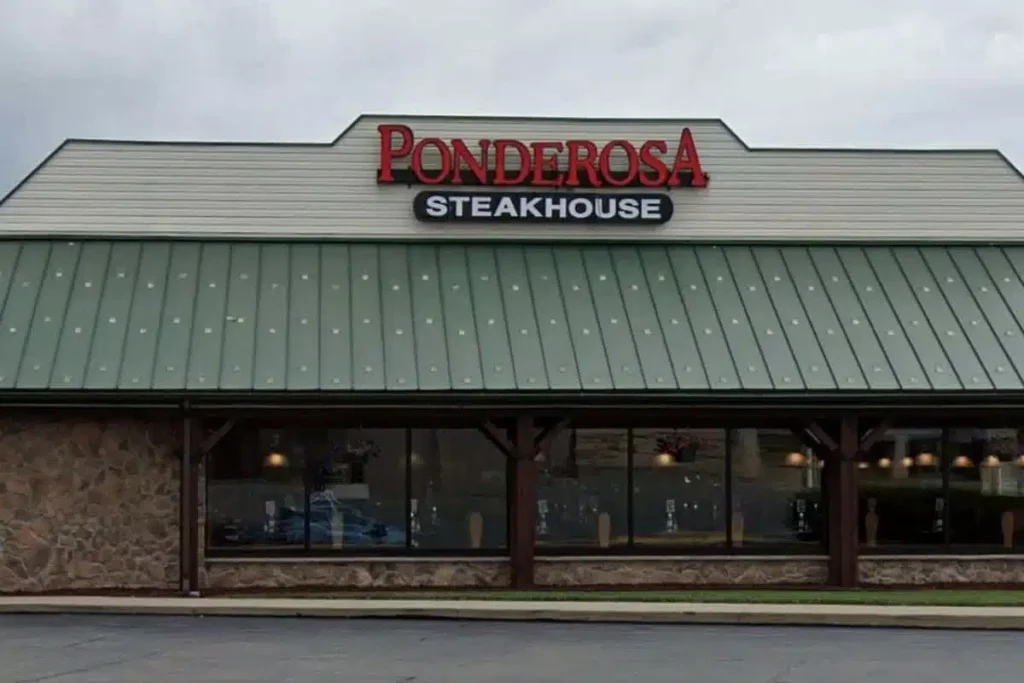
Ponderosa and Bonanza Steakhouses were every family’s affordable answer to dining out. With buffet lines, sizzling steaks, and soft-serve ice cream at the end, they made eating out feel like an event. Their Western theme and hearty meals appealed to diners across America, especially in small towns. But rising costs, changing tastes, and the buffet’s decline made survival tough. A few locations remain, serving nostalgia along with dinner rolls. They were proof that simple food and a warm welcome could turn any night into something special, even without fine dining.
18. ShowBiz Pizza Place

ShowBiz Pizza Place was the kind of restaurant that made kids feel like rock stars. With its animatronic band called the Rock-afire Explosion, the lights, and the sounds of arcade games, it was pure magic in the eighties. Parents enjoyed pizza while kids danced around in wonder. For a time, it was the ultimate birthday destination. But when entertainment trends changed and competition grew, ShowBiz merged with another brand and slowly disappeared. Still, old videos and memories of the singing bears keep its quirky charm alive in the hearts of those who grew up there.
19. Planet Hollywood’s All-Star Café
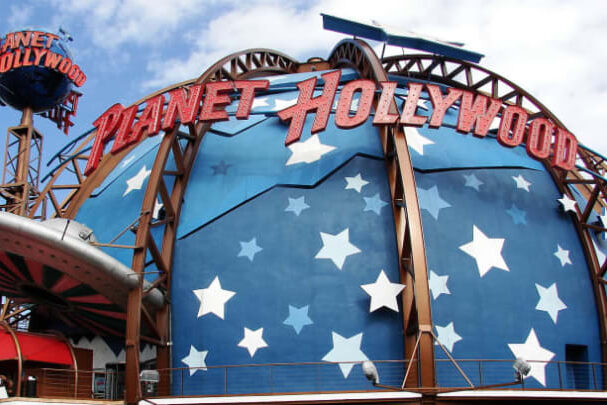
Planet Hollywood’s All-Star Café was where celebrity culture met sports fandom, a mix of memorabilia, energy, and diner-style meals. Its star-studded connections made it feel like the place to be in the nineties. The food was decent, but the experience was what people came for. Over time, though, the excitement faded, and it became hard to keep customers coming back for more than nostalgia. Most locations eventually closed, but for a moment, it felt like you could share a meal in the spotlight. It remains a fun chapter in themed-dining history.
20. Don Pablo’s

Don Pablo’s was a Tex-Mex restaurant chain that brought lively music, bright colors, and sizzling plates to the table. It became a favorite for family dinners and after-work margaritas, offering generous portions and a festive mood. During the nineties, it thrived as one of the few sit-down Mexican chains. But large restaurant spaces and rising costs proved hard to sustain. By the 2000s, it had shrunk to a few locations before closing entirely. Still, people remember its warm chips, bold flavors, and the fun energy that made every meal feel like a celebration.
21. Beefsteak Charlie’s
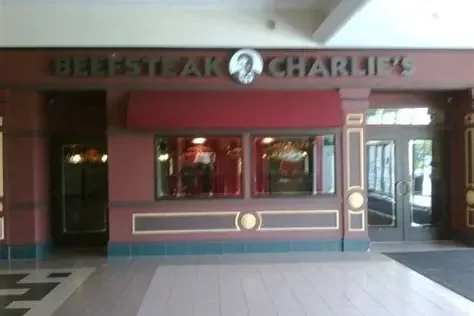
Beefsteak Charlie’s felt like New York’s version of casual dining done right. The slogan “You’re gonna get spoiled” wasn’t just marketing, it captured the easygoing hospitality and generous portions people loved. From endless shrimp to lively salad bars, the restaurant made guests feel indulged. But as rent costs rose and dining styles shifted, the chain’s success faded. Its mix of comfort and cheer became a fond memory for regulars who remember long lunches and slow conversations over steak. Beefsteak Charlie’s may be gone, but the promise of spoiling customers never really went out of style.
22. Lone Star Steakhouse and Saloon

In the nineties, Lone Star Steakhouse and Saloon was where country music met casual dining. The decor was rustic, the portions generous, and the vibe friendly. It gave suburban diners a little piece of Texas wherever they lived. For a while, it thrived, filling a space between high-end steakhouses and everyday dining. But as new chains and modern concepts arrived, Lone Star couldn’t keep up with shifting tastes and fierce competition. The saloon lights eventually dimmed, but memories of those juicy steaks and peanut-covered floors still make people smile.
23. Henry’s Hamburgers

Before the golden arches conquered the world, Henry’s Hamburgers was giving them a run for their money across the Midwest. The burgers were simple, cheap, and delicious, served quickly with a friendly smile. It was a local favorite, a neighborhood stop where families felt at home. But as big brands grew and marketing became a game of giants, Henry’s struggled to keep its place. The chain slowly vanished, leaving behind only a few survivors. For those who remember, Henry’s wasn’t just about burgers; it was about community, warmth, and a taste that felt personal.
24. Champps Americana
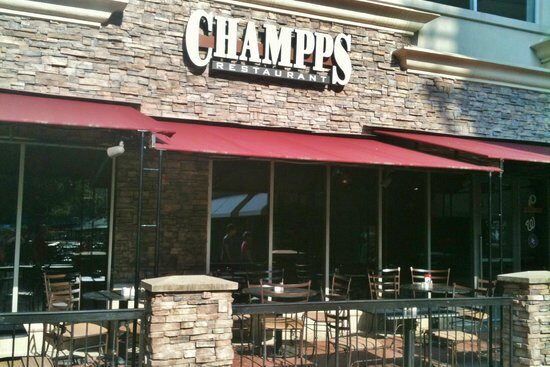
Champps Americana was the kind of place where big screens, laughter, and sizzling appetizers filled the air. It was born in the height of the sports bar boom, offering burgers, wings, and ice-cold drinks in a lively, all-American atmosphere. Friends gathered there after work, fans shouted at TVs, and birthdays turned into cheering sessions. But as smaller, local bars took over and casual dining trends changed, Champps couldn’t stay in the game. Most locations closed quietly, leaving behind fond memories of Sunday games, friendly waiters, and that comforting noise that made every visit feel like a party.
25. Max and Erma’s
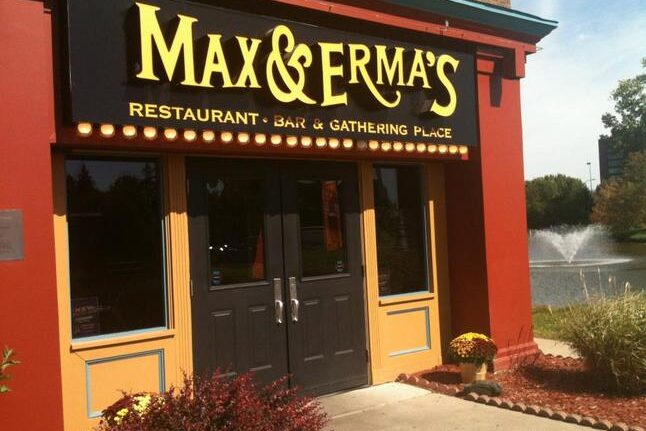
Max and Erma’s felt like a restaurant built for good times and simple meals. It was cozy, quirky, and full of personality, with eclectic decorations and comforting food. Families loved the warm service and desserts like their signature sundaes. The chain became a Midwest staple, a place where a burger and a laugh were guaranteed. But when competition in casual dining intensified, it struggled to keep up with newer, trendier concepts. Slowly, one by one, locations disappeared. For many, it remains a reminder of the good old days when eating out felt genuine and familiar, never forced or rushed.
26. Cheeseburger in Paradise
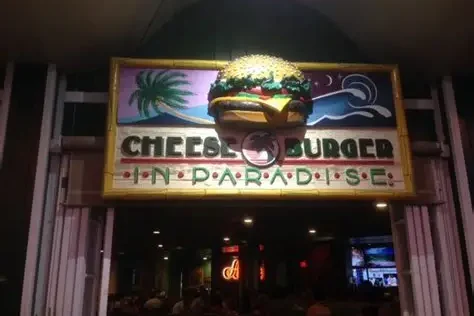
Cheeseburger in Paradise brought tropical vibes to suburban America, inspired by Jimmy Buffett’s laid-back beach anthem. With tiki lights, fruity drinks, and island-inspired burgers, it felt like a mini vacation after a long week. People loved its carefree energy and beach-bar style dining. For a while, it seemed unstoppable. But as dining preferences changed and the novelty wore off, the chain lost its rhythm. Most locations closed, and the brand quietly faded away. Still, hearing that familiar song brings back memories of frozen margaritas, colorful umbrellas, and the illusion of summer that Cheeseburger in Paradise once gave us.
27. Pup N Taco
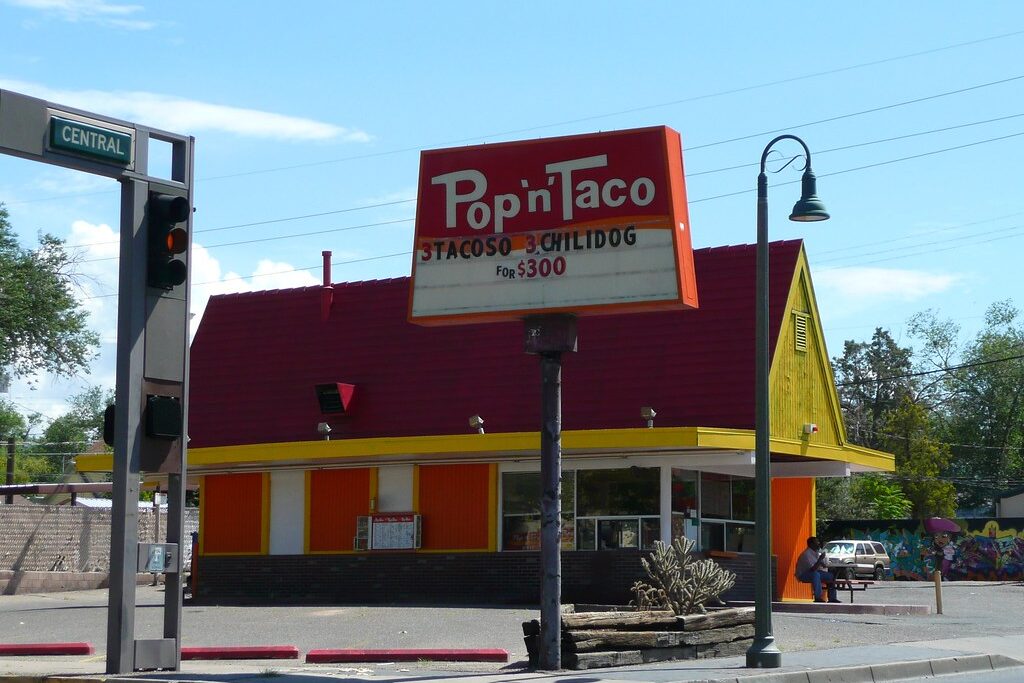
Pup N Taco was one of those rare places where you could order tacos, hot dogs, and pastrami sandwiches in one stop, and somehow it worked. It was a Los Angeles favorite, quirky and fast, with a cult following that adored its mix-and-match menu. The chain had more than a hundred locations before being sold off to a larger brand. Eventually, its name disappeared, but locals still reminisce about those paper-wrapped tacos and root beer floats. Pup N Taco might sound funny now, but for many, it was a taste of LA’s casual food scene before it went mainstream.
28. La Petite Boulangerie
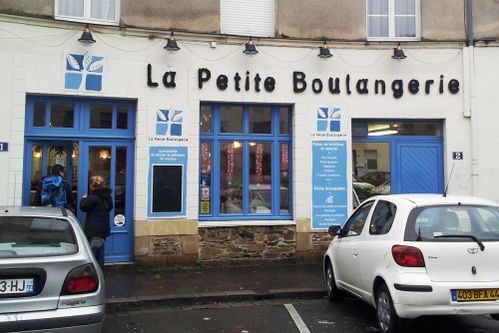
In the eighties, La Petite Boulangerie made a croissant feel like a luxury. This French-style bakery café introduced Americans to flaky pastries, espresso, and soft baguette sandwiches long before the trend caught on. It offered a touch of Parisian charm tucked inside shopping centers and city corners. Customers loved its delicate atmosphere and aroma of fresh bread. But as bigger coffee chains expanded and styles changed, La Petite Boulangerie couldn’t hold its ground. It slowly disappeared, leaving behind the memory of quiet breakfasts and buttery croissants that made mornings feel just a bit more special.
29. Mr. Steak
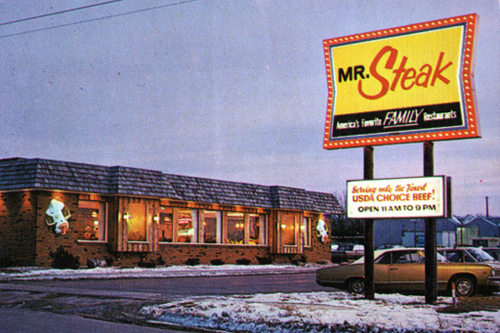
Mr. Steak was the kind of restaurant that made you feel fancy on a budget. It promised a good cut of meat, a baked potato, and friendly service without breaking the bank. Families loved it for birthdays and Sunday dinners, where the staff made everyone feel welcome. For a while, it thrived, but as the casual dining market expanded and competition grew, Mr. Steak struggled to stand out. Locations started closing one after another, and by the nineties, it was mostly gone. Still, it lives on in the memories of diners who loved a good, honest meal.
30. York Steak House

York Steak House was a staple of mall dining in the seventies and eighties, offering cafeteria-style steak dinners that felt both affordable and satisfying. You’d grab a tray, order a steak, and sit with friends after a long day of shopping. The food was straightforward and comforting, the kind of meal that made a trip to the mall feel complete. But as mall culture declined and new dining trends took over, York Steak House faded into memory. For many, it symbolizes the era when a shopping trip ended with steak, laughter, and a shared slice of chocolate cake.
31. Clifton’s Cafeteria
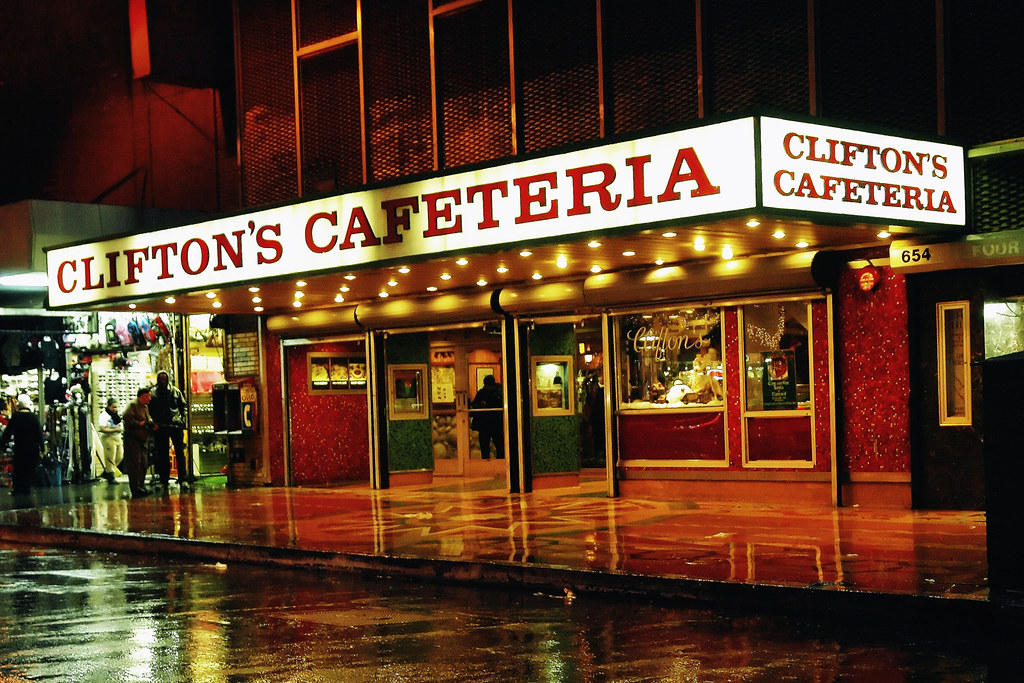
Clifton’s Cafeteria was more than a restaurant; it was a wonderland. With forest-themed décor, glowing lights, and carved wood, it turned every meal into an adventure. Located in Los Angeles, it welcomed everyone from families to dreamers and travelers. The menu offered comfort food like meatloaf, mashed potatoes, and pie. It survived through decades of change but eventually dwindled, leaving behind its iconic neon sign and stories of community. Clifton’s wasn’t just about food; it was about imagination. Those who remember eating under its faux trees recall a feeling that today’s dining rarely captures anymore.
32. Horn and Hardart Automats
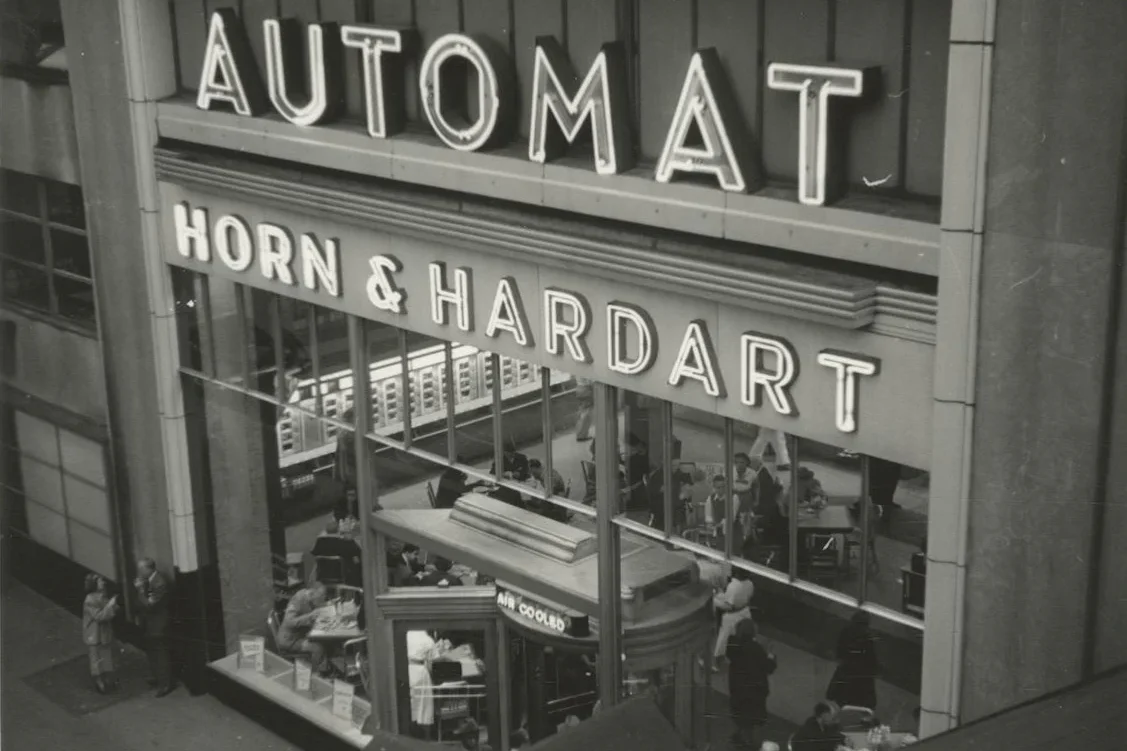
Horn and Hardart Automats were pure magic for their time. Imagine a wall of small glass doors holding everything from pies to mac and cheese, waiting for you to drop in a coin and grab your meal. It felt futuristic, efficient, and strangely charming. For decades, New Yorkers and Philadelphians lined up for their daily lunch, enjoying the novelty and the taste. But when fast food chains arrived, the automats lost their sparkle. By the eighties, most had closed. Still, they’re remembered as symbols of a bygone era when convenience had a little more charm and patience.
33. Po’ Folks
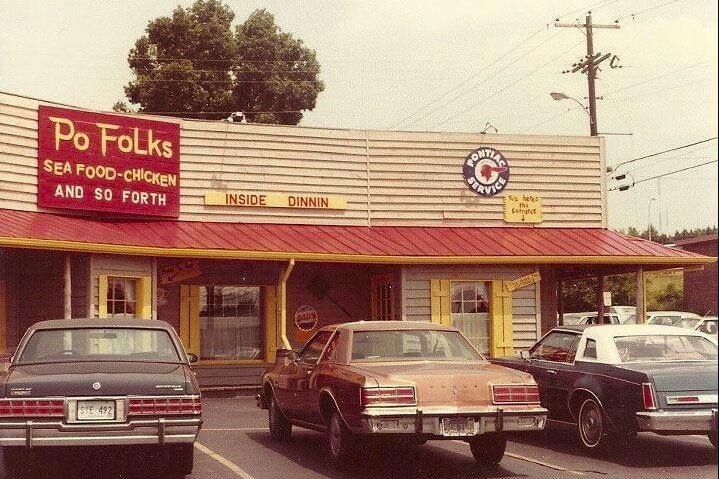
Po’ Folks was all about Southern comfort and down-home cooking. It served fried catfish, cornbread, collard greens, and sweet tea in a setting that felt like grandma’s kitchen. The charm was in its warmth and simplicity. People came for the hospitality as much as the food. During its peak, it had dozens of locations across the country. But changing tastes and corporate challenges led to closures over the years. A few remain under different ownership, but most are gone. Still, Po’ Folks holds a soft spot in hearts that miss its heartfelt service and homestyle plates.
34. Bill Knapp’s
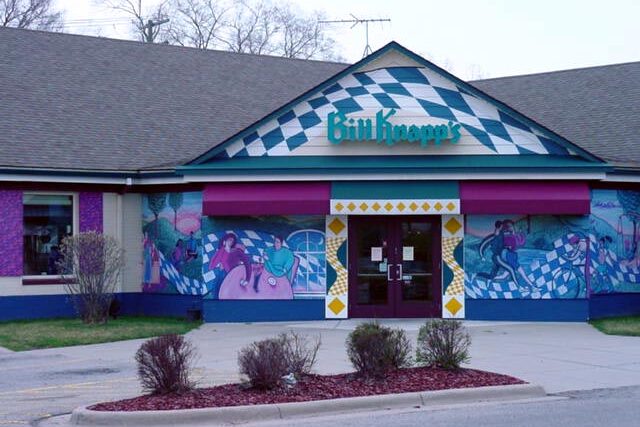
Bill Knapp’s was the definition of a family restaurant in the Midwest. It was cozy, reliable, and famous for giving guests free birthday cakes, which made every visit special. The menu was full of comfort food like fried chicken, pot roast, and mashed potatoes that reminded you of home. Parents loved it because it was clean, affordable, and kid-friendly. For decades, it thrived, but changing dining habits and newer chains made survival tough. Eventually, most locations closed. Still, those who grew up celebrating there remember Bill Knapp’s as the place where birthdays felt truly sweet.
35. Top Hat Hamburgers

Top Hat Hamburgers was a local favorite across the Midwest, known for its simple burgers, fries, and milkshakes that tasted just right. It started small, built around community spirit and fast, friendly service. For years, it stood as a proud alternative to bigger burger chains, offering the same comfort without the corporate gloss. But as marketing budgets grew and national franchises expanded, Top Hat couldn’t compete. One by one, locations disappeared, leaving behind fond memories of drive-ins and family dinners. For many, it was the taste of home wrapped neatly in paper and nostalgia.
36. Happy Chef

Happy Chef brought smiles to road trips across Minnesota with its massive chef statues waving to travelers. It was a diner chain that served breakfast all day and hearty comfort food to anyone who walked through its doors. Families and truck drivers alike made it a favorite stop. Its logo alone was enough to make kids grin. But as time passed and competition from bigger chains grew, many Happy Chef locations closed. A few statues still stand, reminders of a simpler time when good food and a friendly mascot could brighten the highway.
37. Shoney’s Big Boy

Shoney’s Big Boy was once everywhere, a cheerful diner that made comfort food an American staple. The smiling Big Boy statue outside became an icon for generations of families grabbing burgers and shakes. The food was classic, the atmosphere relaxed, and the service friendly. But as dining habits shifted and new chains took over, Shoney’s presence declined sharply. Today, only a few locations remain, mostly in the South. For those who grew up with it, the memory of the Big Boy outside the window still brings a sense of nostalgia that fast food can’t replace.
38. Dog n Suds

Dog n Suds was the ultimate drive-in dream, serving frothy root beer floats, crispy fries, and hot dogs right to your car window. The neon signs, roller-skating servers, and bubbly root beer made it pure Americana. It was more than a meal; it was a whole experience that felt personal and joyful. As drive-in culture declined, most locations closed, though a few still hang on. The sight of that bright yellow dog logo takes people back to warm summer nights, engines humming, and a time when eating in your car felt special, not rushed.
39. Big Boy
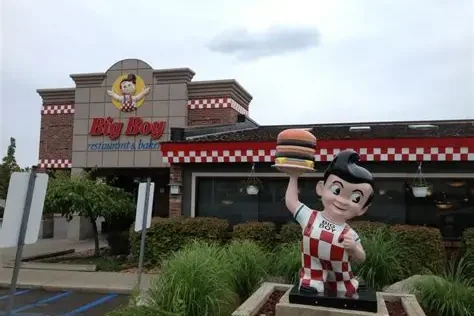
Big Boy was one of the earliest restaurant brands that families trusted for hearty meals and friendly faces. The double-decker burger was its claim to fame, but the real draw was the consistency and comfort of each visit. It wasn’t fancy, just familiar. Over the years, its empire shrank, surviving mostly in regional pockets. But those red booths and cheerful statues left lasting impressions. Big Boy may no longer dominate the dining scene, but for countless diners, it represents a simpler era when eating out was a family ritual that never failed to bring smiles.
40. Friendly’s

Friendly’s was the kind of restaurant that made dessert feel like the main course. Families flocked there for sundaes topped with whipped cream and cherries after enjoying burgers and grilled cheese sandwiches. It was cheerful, bright, and full of laughter. At its peak, there were hundreds of locations across the East Coast. But as new dessert chains and fast-casual spots emerged, Friendly’s struggled to stay relevant. Today, only a fraction remain. Still, for many, nothing compares to a Friendly’s hot fudge sundae shared at the end of a long day with people who made it sweeter.
41. Rainforest Café
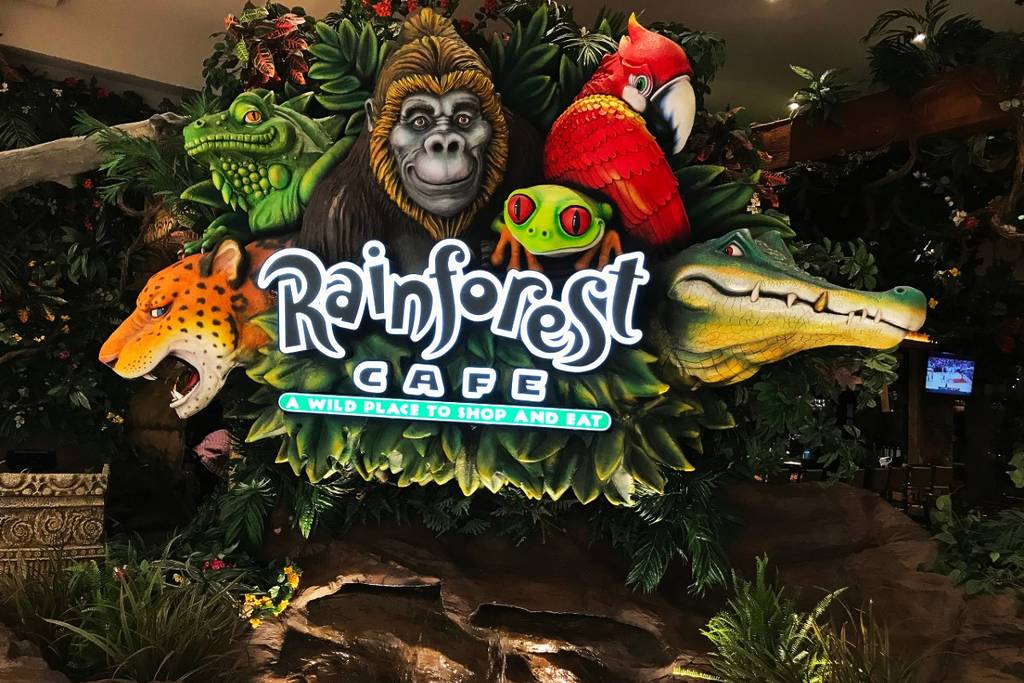
Rainforest Café felt like an adventure inside a restaurant, with thunder sounds, waterfalls, and animatronic animals surrounding every table. It was a hit with kids and families who loved its over-the-top atmosphere as much as its food. Each visit felt like stepping into a jungle escape. But as time passed, the novelty faded and locations started to close. A few remain in tourist spots, but most are gone. Still, the sound of that indoor thunderstorm and the glowing aquariums bring back a spark of childlike wonder for those who ever dined under its fake rainforest sky.
42. Golden Skillet
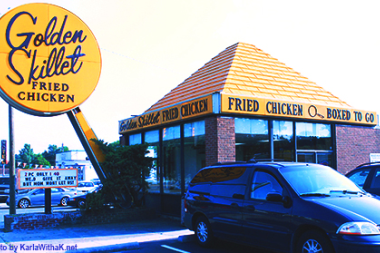
Golden Skillet was a fried chicken chain that started in Virginia and spread across the South with a reputation for crispy, flavorful chicken that rivaled any big brand. Its slogan promised the world’s best fried chicken, and for a time, locals agreed. People loved its homemade sides and the friendly service that made each visit feel personal. But as bigger competitors grew stronger and marketing budgets ballooned, Golden Skillet couldn’t keep up. Most locations closed, though its name still stirs hunger in those who remember. It’s one of those quiet legends lost to time and taste.
43. Sea Galley

Sea Galley was a seafood chain that leaned all-in on fun. The restaurant featured wooden boats as salad bars and cheerful servers who made dining feel like a coastal celebration. Their clam strips and seafood platters were local favorites, while the upbeat slogan “Go baby go” became a catchy line everyone knew. It thrived for a while, but as seafood costs rose and tastes shifted, its sails lost wind. By the early 2000s, most Sea Galley locations had disappeared. For many, it remains a memory of good food and playful dinners with a seaside spirit.
44. Naugles
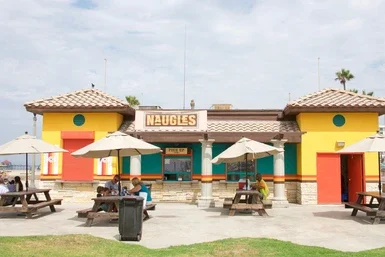
Before the big fast-food Mexican brands dominated, Naugles gave customers quick burritos, tacos, and breakfast plates with real flavor and freshness. It started in California and built a loyal following that swore by its late-night menu. People loved that it felt more authentic than its competitors. Eventually, it merged into a larger chain and lost its identity. Fans never stopped craving its food though, and a small revival effort brought the brand back years later. For many, Naugles represents a taste of California’s early fast-food spirit when simple ingredients made all the difference.
45. Furr’s Cafeteria

Furr’s Cafeteria was the heart of many small towns, where families could line up with trays and choose from steaming dishes that tasted homemade. There was roast beef, fried chicken, and that unforgettable pie selection that made every visit feel like Sunday dinner. The food wasn’t fancy, but it was made with care, served with genuine smiles. At its peak, it was packed with families and retirees enjoying comfort at an easy price. Over time, as buffets and fast casuals took over, Furr’s faded quietly. Still, its memory lingers as the taste of togetherness done right.
This story 45 Failed (or Nearly Failed) Restaurant Chains We Actually Miss was first published on Daily FETCH


